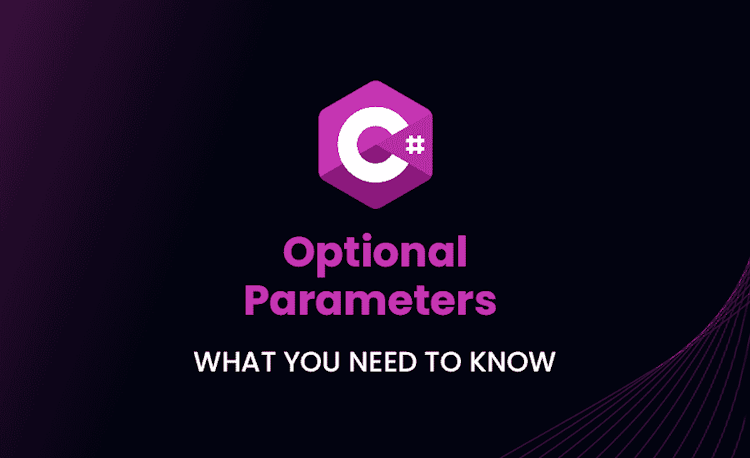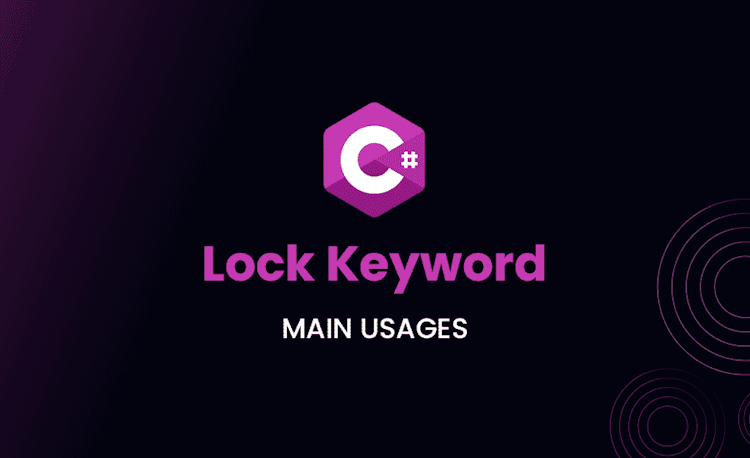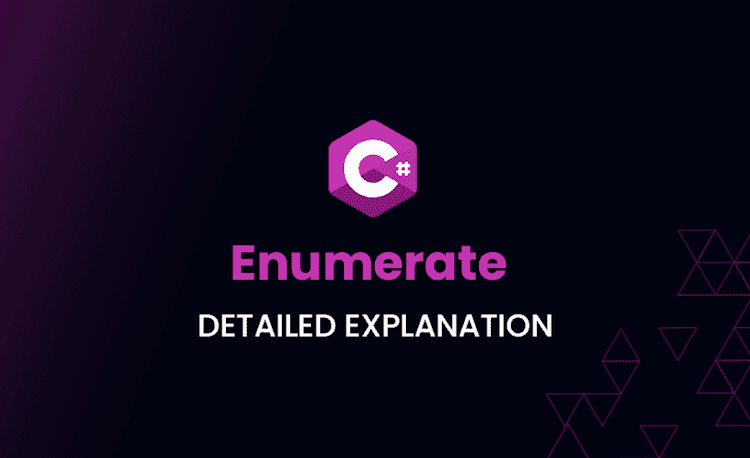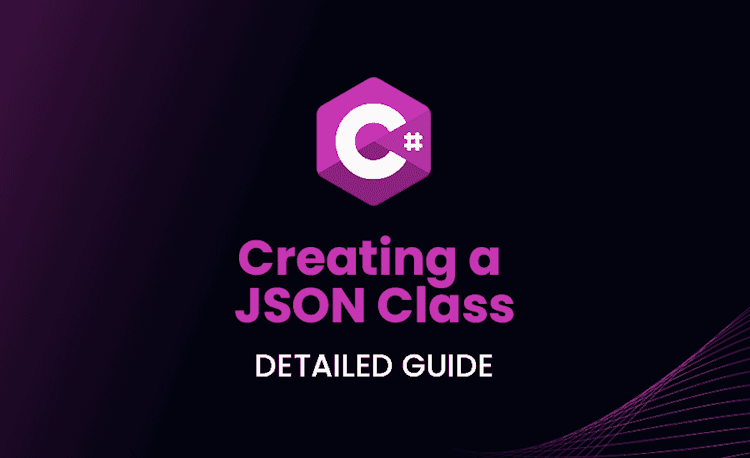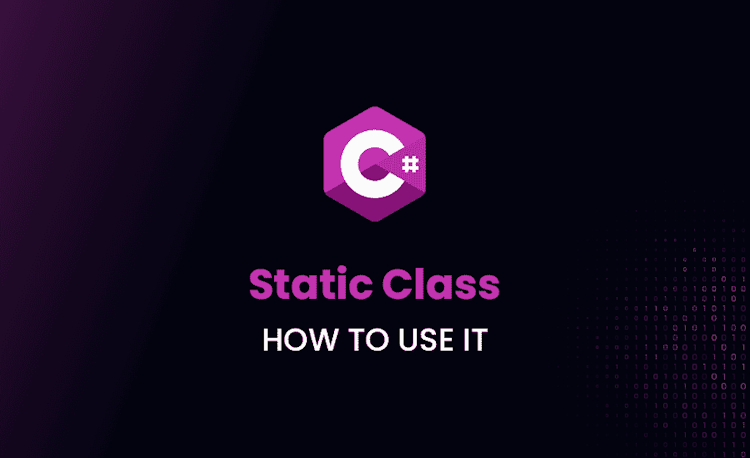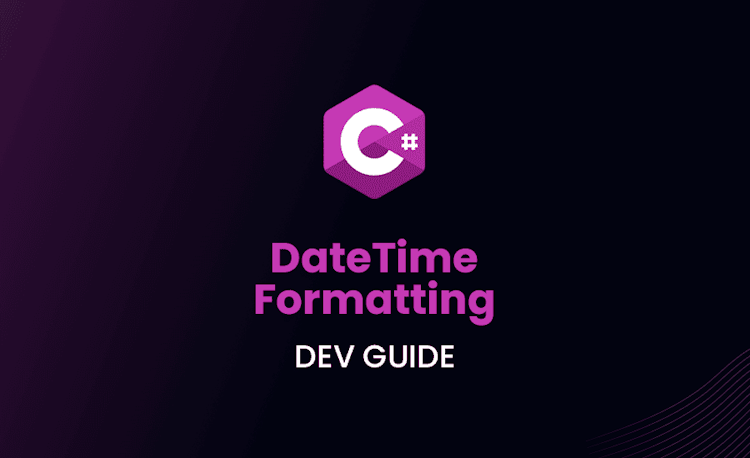C# Polymorphism Interview Questions and Answers
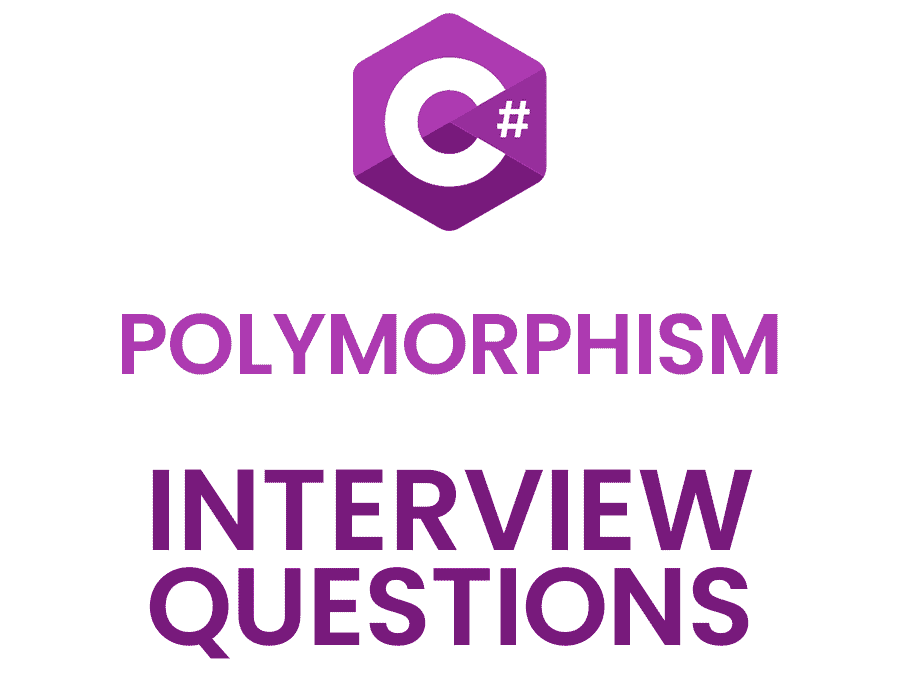
Entering the world of C# development and seeking success in interviews? Look no further! We’ve compiled an in-depth guide on “Polymorphism in C# Interview Questions and Answers” to prepare you for the challenges ahead. Polymorphism, a fundamental concept in object-oriented programming, plays an essential role in creating adaptable and maintainable code.
This article covers the most intricate polymorphism interview questions C# developers might face, providing insightful answers so you can shine during interviews and demonstrate your prowess with polymorphism in C#. So, let’s dive in and sharpen your knowledge!
In C#, how do method hiding and overloading differ from polymorphism, and how are they related?
Answer
Method Hiding:
Method hiding occurs when a derived class declares a method with the same name as a method in its base class. The derived class’s method hides the base method rather than overriding it. This is typically done using the new keyword. Method hiding differs from polymorphism because it doesn’t affect how the method is called based on the object’s instance/reference type. Additionally, it breaks the inheritance chain and prevents the base class method from being called.
Loading code snippet...
Method Overloading:
Method overloading is the concept of having multiple methods with the same name but different parameters within the same class. It has no direct relation to inheritance or polymorphism. Method overloading is a form of compile-time polymorphism, where the method called is determined at the compile time based on the method’s signature, which includes the parameters’ types and their order.
Loading code snippet...
Polymorphism:
Polymorphism allows derived class methods to override base class methods with new implementations, ensuring that the proper method is called based on the instance’s run-time type. Polymorphism typically occurs through the use of virtual methods, abstract methods, or interfaces.
Loading code snippet...
In summary, method hiding is a way of breaking inheritance and hiding base class methods, while method overloading is a means to have multiple methods with the same name in the same class, determined at compile-time. Polymorphism, on the other hand, focuses on overriding methods in derived classes and calling the correct method based on the object’s runtime type.
Explain how to implement compile-time polymorphism using method overloading and specify unique scenarios where this technique becomes essential?
Answer
Compile-time polymorphism is achieved through method overloading, which refers to providing multiple method implementations within the same class, sharing the same name but with different parameters. The proper method to call is determined during the compilation process based on the method signature (parameter types and their order).
Loading code snippet...
Unique scenarios where method overloading is essential:
- Providing default values: Method overloading allows for multiple implementations with varying numbers of parameters, making it easier to provide default values for optional parameters.
Loading code snippet...
- Handling different input data types: Method overloading can be used to handle different input data types more elegantly, without the need for typecasting within a single method’s implementation.
Loading code snippet...
- Providing alternative ways to initialize objects: In constructors, method overloading can be used to provide various ways to initialize objects with different parameters, offering flexibility to the caller.
Loading code snippet...
Method overloading serves as a means to implement compile-time polymorphism in C#, improving code readability and maintainability by allowing methods to handle different input types or parameters more elegantly.
What are the limitations of using interfaces, abstract classes, and sealed classes for implementing runtime polymorphism?
Answer
Interfaces:
Interfaces serve as a blueprint that guarantees a class adheres to specific behavior by implementing all its members, thus helping achieve runtime polymorphism. However, there are certain limitations:
- No default implementation: Interfaces can only contain definitions but cannot provide default implementations for methods until C# 8.0. This means classes implementing the interface must implement all its members.
- Multiple inheritance ambiguity: When a class implements multiple interfaces with methods sharing the same name, it can lead to potential ambiguity, which can be resolved using explicit interface implementation.
- No access modifiers: Interface members must always be public and cannot use access modifiers like private or protected.
- No constructors or fields: Interfaces cannot contain instance constructors or instance fields, only members like properties, methods, and events.
Abstract Classes:
Abstract classes allow for partial implementations and can define both abstract and non-abstract methods in their body. They facilitate runtime polymorphism by allowing derived classes to override their virtual or abstract members. However, some limitations are:
- No multiple inheritance: Classes can only inherit from one abstract class, limiting its flexibility compared to interfaces.
- Less contract-driven: Abstract classes may contain both implementation and abstraction, making it less of a contract-driven approach compared to using interfaces.
- Subclass requirement: Abstract classes can’t be instantiated, so the developer needs to create a subclass to utilize the base class’s functionality.
Sealed Classes:
Sealed classes are classes that cannot be inherited, essentially disallowing any polymorphic behavior. Therefore, using sealed classes for implementing runtime polymorphism is not possible.
In summary, implementing runtime polymorphism in C# involves using interfaces, abstract classes, or a combination of both. Each approach has certain limitations in terms of capabilities, flexibility, and use case scenarios that developers must consider when designing the class hierarchy and adhering to object-oriented programming principles.
How do you enforce polymorphic behavior on a class hierarchy that is part of an external library or package?
Answer
When working with an external library or package where the source code is not accessible or modifiable, enforcing polymorphic behavior can be more challenging. However, a few workarounds can be applied using some of the C# language features and design patterns:
Adapter Pattern: The Adapter pattern allows you to create a wrapper class that encapsulates the third-party class. You can then make the wrapper class adhere to a predefined interface or inherit from an abstract class of your choice.
Loading code snippet...
With the above code, the AdapterClass provides an implementation of IMyInterface while encapsulating the ExternalClass. This new class can now be used polymorphically based on the defined interface.
Inheritance and Extension Methods: If the external class is not marked as sealed, you can create a derived class and use extension methods to extend its functionality and adhere to an interface or abstract class.
Loading code snippet...
In this example, a derived class DerivedClass is created to inherit from the ExternalClass, and an extension method DoWork is added that calls the original class’s method PerformTask. The derived class now implements the interface IMyInterface.
These methods allow you to introduce polymorphic behavior into the external class hierarchy without modifying the original source code.
How does runtime polymorphism using interfaces achieve safe downcasting without sacrificing the type safety offered by C#?
Answer
Runtime polymorphism using interfaces permits organizing classes based on their behavior into a contract and allows for safe downcasting. This approach ensures developers adhere to the type safety provided by the C# language and avoids potential runtime errors caused by incorrect downcasting.
When using interfaces, a more specific class implementing the interface can be assigned or upcast to a variable of the interface type. Later, if you wish to downcast the object back to its original (derived) type, you can use the as keyword or is keyword to achieve this safely without causing runtime errors.
Using as keyword:
Loading code snippet...
In this example, the as keyword is used to downcast the IFlyable object to a Bird instance. If the cast is not successful, where the object is not of type Bird, the value assigned to bird would be null. This prevents InvalidCastException at runtime.
Using is keyword:
Loading code snippet...
Here, the is keyword is used to perform both type checking and downcasting in a single step. If the object is of type Bird, the condition evaluates to true, and birdInstance holds the downcast value.
These methodologies ensure safe downcasting and maintain the type safety offered by the C# language when performing runtime polymorphism using interfaces.
As we make our way through these polymorphism C# interview questions, it’s apparent that understanding how polymorphism works in various scenarios can significantly impact your code’s performance and design.
Now that we’ve tackled some initial questions, let’s move forward and explore more intricate polymorphism in C# interview questions related to advanced language features and principles.
How would you implement mixin-like behavior within a C# project to achieve polymorphic composition over inheritance? Describe the limitations of this approach.
Answer
Mixin-like behavior can be achieved in C# through the use of interfaces with default implementations (available in C# 8.0 and beyond) along with extension methods to simulate multiple inheritance and promote composition over inheritance.
Implementing mixin behavior using interfaces with default implementations:
This feature allows you to provide a default implementation for a method defined in the interface. Starting from C# 8.0, when a class implements such an interface, it inherits the default method implementation, leading to mixin-like behavior.
Loading code snippet...
Implementing mixin behavior using extension methods:
Extension methods provide a way to extend existing types with new methods without altering their implementation. This can be beneficial in simulating mixins.
Loading code snippet...
Limitations:
Although mixins in C# using interfaces with default implementations or extension methods offer more flexibility than traditional inheritance, there are certain limitations:
- Default implementations do not support property accessors or fields, leading to potential workarounds for state management.
- Interfaces with default implementations are supported only in C# 8.0 and later.
- Extension methods can’t access private or protected members of the class they’re extending, only public members or interface implementations.
- Mixin-like solutions can lead to confusion and complexity due to indirect inheritance when multiple mixins are involved.
When it comes to optimizing polymorphism for caching and performance, how do you address issues related to the cache-oblivious performance of virtual method calls?
Answer
The cache-oblivious performance aspect is essential in scenarios where the order of objects in memory affects cache hit rates, potentially compromising the performance of virtual method calls due to cache misses. To address such issues in optimizing polymorphism, developers can adopt various strategies:
Object Pooling:
Object pooling helps keep instances of the same class close together in memory, thus improving cache locality when calling virtual methods on similar objects.
Loading code snippet...
Data-Oriented Design:
Applying data-oriented design (DOD) principles can help improve cache locality in polymorphic code. Instead of relying on object-oriented design, DOD focuses on optimizing data layouts for improved cache hit rates.
- Separate data from logic: Instead of storing data with the object, creating separate collections for data elements can improve cache performance.
- Use of structs: Utilizing value types, like structs, in place of classes for small, frequently-accessed objects can improve cache hit rates.
- Apply memory-efficient data structures like array or list, and sort by type when iterating over polymorphic collections.
Inlining methods:
Inlining virtual methods only when necessary can eliminate the overhead of virtual dispatch. However, this approach must be used cautiously and only in performance-critical cases, as it can lead to code bloat.
Loading code snippet...
By marking a derived class as sealed, the JIT compiler can inline virtual methods under specific conditions, eliminating virtual method call overhead.
It is vital to profile and analyze performance while using these strategies, as certain techniques may increase complexity and compromise code readability and maintainability. Proper analysis helps find the best balance between performance and maintainability while addressing cache-oblivious issues in polymorphic code.
How does C#’s polymorphism interact with Structs(Value Types) with its default implementation of the virtual method table? What are the performance implications?
Answer
C#’s polymorphism relies on reference types (classes) to provide the default implementation of interfaces or abstract base classes through the virtual method table (vtable).
However, structs (value types) behave differently, and their interaction with polymorphism can lead to certain performance implications.
When a struct implements an interface or a virtual method of a base class, the following happens:
- An instance of the struct is boxed when assigned to a variable of the interface/base class type.
- Once boxed, the virtual method call happens using the virtual method table.
Loading code snippet...
Performance implications:
- Boxing and unboxing overhead: When a struct instance is assigned to an interface or base class type variable, boxing and unboxing are necessary. This can lead to a decrease in performance and additional memory allocation for the boxed object on the heap.
- Virtual call overhead: Once a struct has been boxed, virtual calls take place via the virtual method table (vtable), which adds to the method call overhead when compared to a direct method call on the struct.
To mitigate these performance issues, consider the following:
- Be cautious when using polymorphism with structs. If possible, try to avoid using interfaces or base classes with structs, and attempt to use static, compile-time polymorphism via generic constraints instead.
- Leverage .NET Core’s new
System.Runtime.CompilerServices.Unsafepackage, which allows you to avoid boxing when calling interface methods on structs, utilizing theAsRefmethod.
Loading code snippet...
- Use other strategies, like pattern matching, to achieve runtime polymorphism without the overhead of boxing and virtual calls, if applicable.
How would you determine if Liskov Substitution Principle (LSP) has been violated by a class hierarchy, and what can you do to correct or refactor the code?
Answer
The Liskov Substitution Principle (LSP) is a fundamental principle of object-oriented programming and inheritance, stating that if a program is using a base class, it should be able to substitute any of its derived classes without affecting the correctness of the program.
To determine if the LSP has been violated by a class hierarchy, developers should look for the following indicators:
- Preconditions are strengthened in derived classes: A derived class must accept at least the same range of input values as its base class, possibly more but never less.
Loading code snippet...
- Postconditions are weakened in derived classes: A derived class must guarantee at least the same output values as its base class, possibly less but never more.
Loading code snippet...
- Invariants are not maintained by derived classes: A derived class must maintain the same invariants as its base class.
Loading code snippet...
To correct or refactor code violating LSP, developers can implement the following strategies:
- Refactor the code using composition: If a derived class does not completely adhere to the base class’s contracts, consider using composition instead of inheritance.
- Refactor the class hierarchy: Create a new common base class that reflects the shared contracts between the classes, and re-arrange the inheritance accordingly.
- Refactor method contracts: Examine the contracts of the base and derived class methods and identify whether preconditions or postconditions can be altered without violating the original intent of the base class.
- Use interfaces and explicit interface implementation: Introduce interfaces to separate shared contracts as separate behavioral aspects and implement them using explicit interface implementation in derived classes to avoid conflicts of method signatures.
Loading code snippet...
It is essential to analyze each situation carefully, as the corrective action may vary depending on the context and specific class hierarchy requirements. Ensuring adherence to LSP contributes to more flexibility, maintainability, and scalability in your code.
How do you manage the Dependency Inversion Principle (DIP) to achieve polymorphism through Inversion of Control (IoC) containers and Dependency Injection (DI)?
Answer
The Dependency Inversion Principle (DIP) is a design principle in object-oriented programming that promotes the decoupling of high-level and low-level modules. It states that high-level modules should not depend on low-level modules but instead depend on abstractions. This principle helps achieve polymorphism by enabling the substitution of different implementations during runtime without affecting the high-level module.
To manage DIP and achieve polymorphism, developers can use Inversion of Control (IoC) containers and Dependency Injection (DI):
- Define abstractions (interfaces or abstract classes): Start by creating abstractions that both high-level and low-level modules can depend on. These abstractions will serve as a contract between modules, enabling the runtime selection of concrete implementations.
Loading code snippet...
- Implement abstractions in concrete classes: Create concrete implementations based on defined abstractions. These concrete classes can exhibit polymorphic behavior without directly depending on high-level modules.
Loading code snippet...
- Use Dependency Injection (DI) to inject concrete implementations: Inject concrete classes as dependencies into high-level modules via constructor, property, or method injection. This allows for the inversion of control (the control over which implementation to use is inverted and managed externally) and promotes polymorphism.
Loading code snippet...
- Use IoC containers as a registry for dependencies: Inversion of Control (IoC) containers serve as a centralized registry for managing dependencies and their lifetimes. Register concrete types with their corresponding abstractions in the IoC container.
Loading code snippet...
- Resolve dependencies through IoC containers: When your application requires an instance of a high-level module, request it from the IoC container. The container will resolve dependencies, including all required polymorphic implementations.
Loading code snippet...
Through the use of DIP, Dependency Injection, and IoC containers, developers can achieve runtime polymorphism while maintaining a clean, decoupled architecture.
Great job persevering through the first ten questions! By now, you’ve delved deeply into the nuances of polymorphism interview questions C#.
Your newfound knowledge of runtime polymorphism and how it plays into complex design patterns will undoubtedly set you apart from other interviewees. As we continue, you’ll discover even more intricate and intriguing questions that will further enhance your understanding of polymorphism in C#.
How can the Explicit Interface Implementation (EII) help in overcoming conflicts with polymorphism when multiple interfaces have methods with identical names?
Answer
Explicit Interface Implementation (EII) is a feature in C# that allows a class to explicitly implement methods of an interface without exposing those implementations through the class’s public API. This feature can help overcome conflicts and ambiguities with polymorphism when multiple interfaces have methods with identical names.
In the following example, two interfaces have a method with the same name Save.
Loading code snippet...
To resolve this conflict, you can use Explicit Interface Implementation:
- Implement the method with the interface name as a prefix, followed by a dot (.), then the method name.
Loading code snippet...
- To invoke these explicit implementations, cast the class instance to the respective interface or use a variable with the interface type.
Loading code snippet...
Using Explicit Interface Implementation helps in overcoming conflicts with polymorphism when multiple interfaces have methods with identical names. The features provide more control over the implementation and resolution of interface methods, making the code more robust and maintainable.
Explain how C#’s pattern matching capabilities integrate with polymorphism and provide an example use case where it simplifies code compared to traditional approaches.
Answer
C#’s pattern matching capabilities integrate with polymorphism by allowing you to match objects based on their types and shape without needing explicit casting, instanceof checks, or invocation of virtual methods. This helps in simplifying the code when working with different implementations of interfaces or abstract classes.
Consider a traditional approach using polymorphism with an interface IShape and two implementing classes Circle and Rectangle.
Loading code snippet...
With pattern matching, you can rewrite this code to simplify it, eliminating the need for an interface or virtual methods:
Loading code snippet...
In this example, the GetArea method demonstrates the use of pattern matching, providing a simplified way of working with polymorphic objects without using interfaces or virtual methods.
Pattern matching enhances polymorphism with the following benefits:
- Simplifies code: Removes the need for explicit casting or using
isandasoperators when working with different object types. - Increased safety: Evaluates and casts the object in a single step, reducing the risk of runtime errors due to incorrect casting.
- Readability: Improves code readability and maintainability through concise, expressive syntax that demonstrates intent.
However, it’s essential to carefully evaluate when to use pattern matching with polymorphism, as some cases may benefit more from traditional approaches like interfaces or virtual methods, especially when dealing with complex class hierarchies or when the polymorphic behavior must be enforced through contracts.
When designing a class hierarchy, how do you make the decision between using a single inheritance with an abstract base class and multiple inheritances with interfaces?
Answer
When designing a class hierarchy in C#, deciding between single inheritance with an abstract base class and multiple inheritances with interfaces depends on various factors:
- Behavior vs. properties: Abstract base classes can provide both behavior (methods) and state (properties or fields), whereas interfaces can only define behavior contracts. If you need to inherit state, consider using an abstract base class.
- Code reuse: If you need to provide a base implementation for certain methods across different classes or want to enforce a specific structure with minimal code duplication, an abstract base class might be more suitable.
- Flexibility: Multiple interfaces allow you to inherit behavior from multiple sources while maintaining separate contracts. If flexibility is a priority, consider using interfaces.
- Required contracts: If a class must implement certain methods, interfaces are a viable way to enforce contracts among unrelated classes, as interfaces represent a “can-do” relationship.
- Default implementations: Starting with C# 8.0, interfaces can provide default implementations. This can help reduce the necessity of using abstract base classes for shared method implementations but should be used cautiously.
Here’s an example illustrating the use of an abstract base class and multiple interfaces:
Loading code snippet...
In the example, the Animal abstract base class provides a shared property Name and enforces the MakeSound method, while the IFlyable and ISwimmable interfaces allow more flexibility in behavior combinations.
When choosing between single inheritance with an abstract base class or multiple inheritances with interfaces, consider the design goals, flexibility requirements, and level of code reuse needed. Often, it’s beneficial to use a combination of both, depending on the situation and desired outcomes.
How do you apply the Template Method Design Pattern in a C# application to enforce a consistent algorithm workflow while allowing subclasses to override certain steps polymorphically?
Answer
The Template Method Design Pattern is a behavioral design pattern that defines a method’s skeleton in a base class, allowing subclasses to override or extend specific parts of the algorithm without changing the overall structure. Here’s how you can apply this pattern in a C# application:
- Create an abstract base class containing the method template, which enforces a specific sequence of method calls.
- Mark the methods in the base class as virtual or abstract, which allows subclasses to override or extend them.
- Implement the remaining common functionality provided by the base class.
- Inherit from the base class in subclasses and override the desired methods.
Let’s demonstrate this pattern with an example:
Loading code snippet...
In this example, BeverageMaker is the abstract base class that defines the template method PrepareBeverage. The CoffeeMaker and TeaMaker subclasses override the Brew and AddCondiments methods to provide their specific implementations. However, the overall algorithm workflow remains consistent and controlled by the base class.
You’re doing fantastic! These fifteen questions have covered diverse aspects of polymorphism in C# interview questions, from fundamental concepts to the impact of language features like generics and pattern matching.
As we proceed to the remaining questions, you’ll be prepared to tackle even more complex scenarios and demonstrate your skills as a C# developer.
How do you apply the GOF decorator pattern in C# to extend a base class’s functionality without affecting the base class through polymorphic composition?
Answer
To apply the Gang of Four (GOF) Decorator Pattern in C#, you can use the following steps:
- Define a common interface or abstract class that represents the base functionality.
- Implement the concrete base class that provides the base functionality.
- Create abstract decorator class that also implements the common interface/abstract class and has a reference to an object of the same type.
- Implement one or more concrete decorators that inherit from the abstract decorator class. Each concrete decorator should override methods from the common interface, add new behavior, and optionally call the wrapped object’s methods.
Here’s an example of applying the Decorator Pattern to extend the functionality of a Pizza class:
Loading code snippet...
Now, you can create a pizza with added toppings and calculate the cost using the Decorator Pattern without modifying the PlainPizza class:
Loading code snippet...
Using the GOF Decorator Pattern, you can extend the base class’s functionality through polymorphic composition without affecting the base class itself.
How does C#’s polymorphism interact with Structs(Value Types) with its default implementation of the virtual method table? What are the performance implications?
Answer
In C#, struct is a value type and follows different behavior than reference types (e.g., classes) when dealing with polymorphism. Because structs do not support inheritance (except inheriting from System.ValueType, which is implicit), they cannot be involved in a classic polymorphic relationship like classes. For instance, you cannot define virtual, abstract, or override methods within a struct.
However, structs can still implement interfaces that provide a level of polymorphism. When a struct implements an interface and gets boxed to its interface type, it would need to follow the virtual method table (vtable) dispatching mechanism on the heap. This situation can introduce some performance overhead, including:
- Boxing and Unboxing: When a struct gets boxed into an object and subsequently unboxed, it could incur additional time and memory overhead. Boxing a struct allocates memory on the heap, copies the value, and produces a reference to the heap object.
- Indirect vtable lookups: When calling a method on an interface implemented by a struct, the CLR performs an indirect lookup through the vtable to find the appropriate method. This introduces some overhead compared to direct calls in the case of non-interface methods.
To minimize the performance impact of using polymorphism with structs, you can:
- Avoid or minimize boxing and unboxing by using generic constraints (where T: struct) or concrete types rather than interfaces.
- If you must use interfaces, limit the number of method calls on the interface to reduce the overhead of indirect vtable lookups.
- Consider using a design with a smaller number of interfaces and fewer methods on each interface, which can also help reduce the number of method calls.
Describe how you would use the MEF (Managed Extensibility Framework) for introducing dynamic polymorphism in large modular applications.
Answer
The Managed Extensibility Framework (MEF) is a component of .NET that provides a means to build extensible and composable applications. It promotes inversion of control, dependency injection, and dynamic runtime discovery of components. This facilitates dynamic polymorphism by allowing developers to add or modify components without changing the application’s core functionality. Here’s how you can implement dynamic polymorphism using MEF:
- Define a shared interface/contract: Create an interface or an abstract base class that defines the common contract between the components. In large applications, this contract is typically defined in a separate assembly.
Loading code snippet...
- Implement the contract in multiple components: Develop various components that implement the shared contract. Apply MEF’s
[Export]attribute to signal that the component should be discoverable for composition.
Loading code snippet...
- Import the components in the main application: In the main application, use MEF’s
[ImportMany]attribute to import multiple instances of the shared contract.
Loading code snippet...
- Initialize and utilize the components: Configure and instantiate the MEF container and composition host. With the host in place, discover and use the available plugins.
Loading code snippet...
MEF takes care of discovering, instantiating, and managing the components’ lifecycle. It enables dynamic polymorphism by decoupling the components from each other and managing their dependencies, which makes it simpler to add, modify, or remove components as needed.
How do you mitigate the performance impact of boxing and unboxing when you need to use polymorphism with non-nullable value types?
Answer
Boxing and unboxing have performance implications due to memory allocation and additional operations at runtime. When using polymorphism in combination with non-nullable value types (e.g., structs), you may need to find ways to minimize or avoid the performance overhead:
- Use Generics: Leverage generics and generic constraints to create polymorphic methods and types that work with value types without the need for boxing. By imposing constraints like
where T : struct, you can provide type safety while avoiding boxing when calling methods or using properties. For example:
Loading code snippet...
- ValueTuple: Consider using ValueTuple instead of Tuple for grouping multiple value types into a single entity. ValueTuple is a struct that avoids the heap allocation and results in better performance. For example:
Loading code snippet...
- Pattern Matching: In some cases, C# pattern matching can be used to implement logic based on different value types without boxing/unboxing. For instance, you can use type patterns in a switch expression to handle type-based logic within a single method:
Loading code snippet...
- Avoid unboxing cast: When working with collections, you can use generic collections to avoid unboxing cast. For example, instead of using an
ArrayList, useList<int>to store integers as value types without boxing.
While some optimizations are possible, it’s important to note that genuine polymorphism with value types will inherently involve some degree of boxing and unboxing. Consider the trade-offs between performance and architectural requirements when making design decisions in your specific application.
How does the upcoming C# 10’s
Answer
In C# 10, record struct introduces a new kind of value type that combines aspects of records (immutability and concise syntax) with the memory and performance advantages of structs.
In terms of the polymorphism framework, a record struct behaves similarly to a regular struct:
- It is a value type and therefore does not support inheritance from other classes or structs (except for the implicit inheritance from
System.ValueType). - It can implement interfaces and utilize polymorphism through those interfaces, incurring boxing and unboxing overheads when upcasting to an interface.
The primary implications of using record struct within the context of your program’s inheritance hierarchy include:
- Memory and Performance: Combining the immutable nature of records with the advantages of structs results in memory-efficient and performant value types. However, using them with interfaces in polymorphic scenarios could result in boxing and unboxing performance overhead.
- Immutability: Because they are immutable,
record structpromotes a functional programming paradigm, reducing the likelihood of shared state and unintended side effects within your inheritance hierarchy. - Limited Inheritance: Since a
record structcannot have a base class (other thanSystem.ValueType), it encourages a more composition-based design when constructing the inheritance hierarchy of your application.
Using record struct specifically with polymorphism will depend on your application’s requirements and constraints. Generally, they are advantageous when working with immutable data structures with well-defined interfaces, where potential performance overhead is taken into consideration and minimized where possible.
Congratulations on reaching the end of our comprehensive guide to polymorphism interview questions C#! By working through these challenging questions, you’ve honed your understanding of polymorphism in C# and how it shapes robust, maintainable code.
As you venture forth into interviews, remember to apply the insights you’ve gained here and showcase your dedication to mastering your C# craft. Your thorough grasp of polymorphism and object-oriented principles will no doubt impress potential employers and pave the way to a bright future in C# development. Best of luck in all your endeavors!
